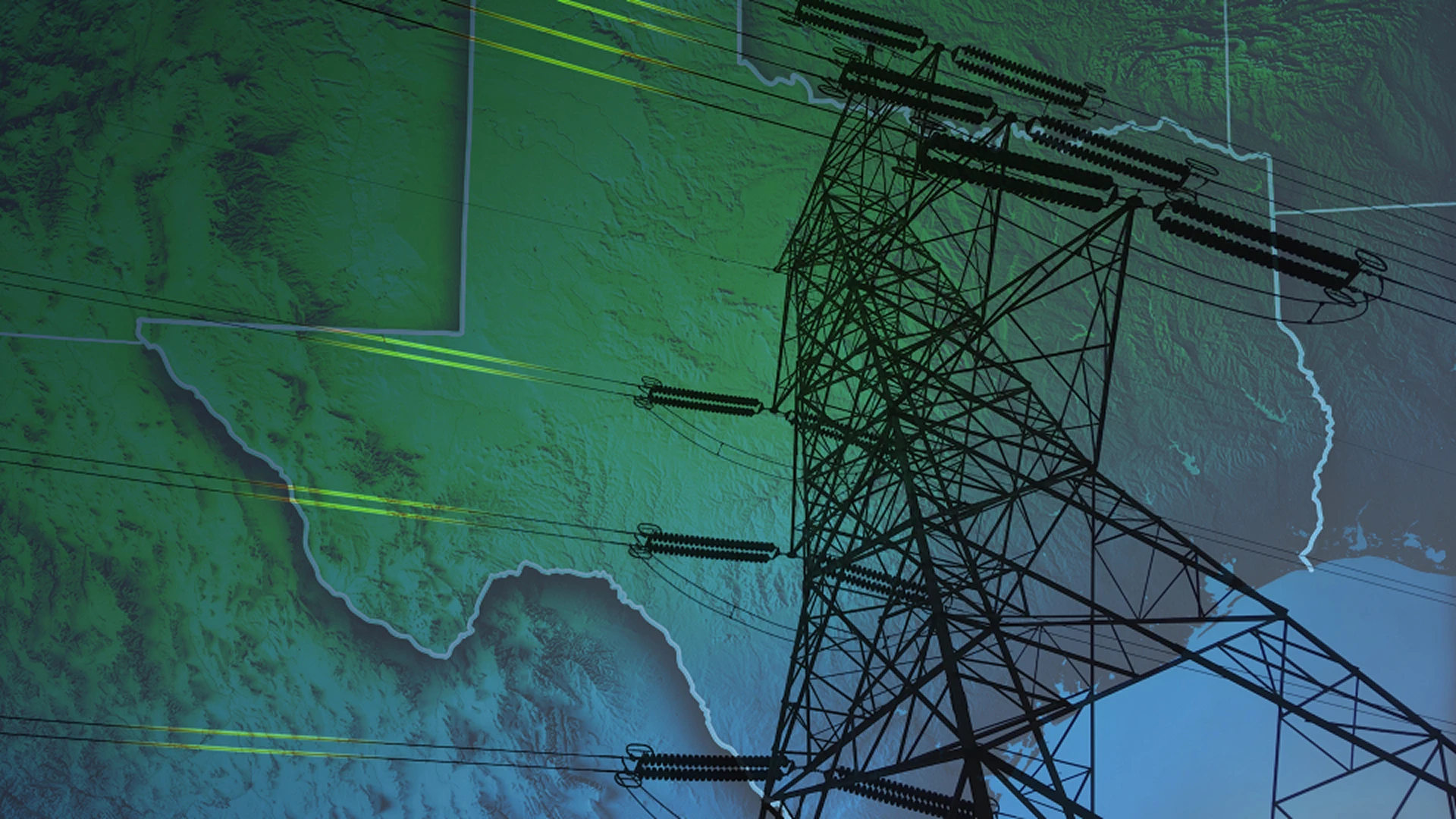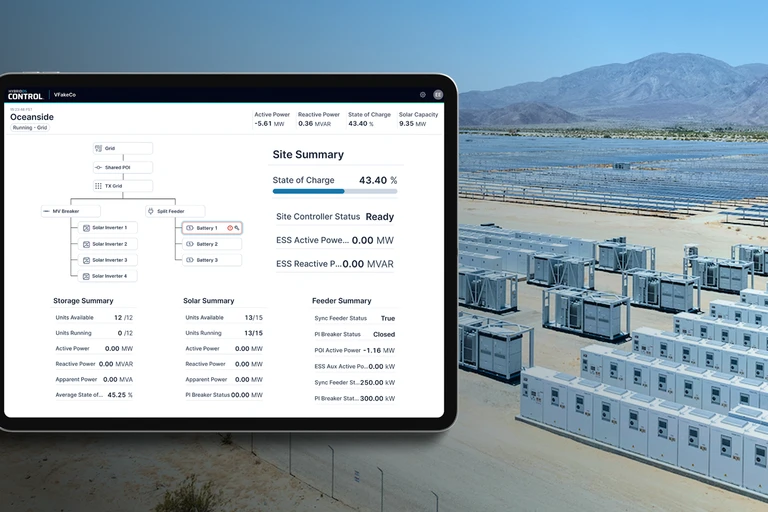Texas Senate Bill 6 (SB6) was recently signed into law, enacting key changes to how large-load electricity customers interconnect and contribute to the ERCOT grid. As a result of SB6, data centers and other facilities drawing 75 MW or more of electric load will be responsible for new interconnection costs, mandatory load flexibility during grid emergencies, and could see changes to their delivery charges.
The legislation is designed to ensure that large energy users help cover interconnection costs, strengthen protections for grid reliability, improve load forecasting accuracy in ERCOT, and protect customers from outages. For data center developers and owners, SB6 means evolving your energy strategy to not only comply but capture new opportunities within this regulatory framework.
With over 40 battery projects in ERCOT alone, FlexGen has extensive experience designing, integrating, and operating battery storage assets and addressing the challenges data centers will face with SB6. With large-scale, software-controlled battery storage installed on site, data centers can ensure compliance while maintaining uptime, bolstering reliability, reducing costs, and generating revenue.
What data centers need to know about Texas Senate Bill 6
Texas SB6 has several implications for large loads connected to the grid, like data centers, ranging from new costs to new rules around load curtailment. While SB6 only applies to ERCOT customers, understanding these directives is smart for any data center developer. As policymakers seek solutions to protect grid reliability and residential customer costs, we can expect similar legislation to surface across the country.
Key takeaways from SB6
- New interconnection costs: Data centers and other facilities with electric loads of 75 MW or more are now required to share interconnection costs and pay upfront study fees of a minimum $100,000 for initial transmission screening studies. This helps utilities recover a portion of interconnection costs, lessening the burden on residential ratepayers.
- Increased transparency and financial commitment: Data center developers will have to demonstrate site control, commit financially (e.g. security per MW), and reveal if they have parallel interconnection applications elsewhere. This requirement prevents speculative “phantom loads” that could distort ERCOT’s Load Resource Plan and transmission planning models. Large-load sites must also disclose the presence and capacity of on-site backup generators capable of serving 50% or more of their load.
- Mandatory load flexibility: In grid emergencies, ERCOT may issue large-load customers “reasonable notice” to either deploy their backup generation or curtail their load. New large loads after December 31, 2025, must install equipment allowing remote disconnection during these firm load-shedding events.
- New demand response program: Under SB6, ERCOT is directed to create a voluntary, competitively procured demand response service for large loads, with at least 24-hour’s notice before an event. This service will require real-time load telemetry and potentially fast-response demand controllers at large sites.
- Updated delivery charge methodology: The Public Utility Commission (PUC) of Texas must reevaluate the “Four Coincident Peak” (4CP) methodology for allocating transmission costs and consider alternatives, with new rules finalized by December 31, 2026. The 4CP determines a large-load customer’s TDU (Transmission and Distribution Utility) charges.
Battery storage serves as a reliability layer for ERCOT data centers
Large-scale, software-controlled battery storage offers data center customers the ability to meet the power demand needs of AI training workloads, ensure stable power supply, and enable greater load flexibility. One major concern of SB6 is how it will impact data center uptime during emergency grid events, where large-load curtailment will be required. On-site energy storage assets can help ensure consistent, reliable power while still maintaining 24/7/365 data center operations:
Sustain uptime without fully powering down. A data center with behind-the-meter battery storage can sustain critical IT load locally while isolating from grid power during firm load shedding events. This meets ERCOT’s requirement for curtailment without fully powering down the facility.
Meet dispatchable flexible load criteria. Controlled by advanced software, battery storage can instantly curtail a data center’s draw on grid power by discharging during demand response events, which makes the data center appear as a dispatchable flexible load. Participating in demand response also creates a potential new revenue stream for data centers.
Reduce reliance on diesel generators. With the right configuration, battery storage systems can substitute or complement diesel generators by providing backup power, handling fast frequency support, and providing instantaneous response to ERCOT emergency calls.
Batteries can reduce interconnection costs and TDU delivery charges
Another major implication of SB6 is that it will increase interconnection costs and ongoing utility charges for data center developers, owners, and operators. Battery storage can help on both fronts when deployed and optimized strategically.
Cut interconnection costs and increase speed to power. On-site battery storage can reduce a data center’s net grid capacity request, or the maximum amount of capacity the data center expects to draw from the grid at one time. With software-controlled batteries, data centers can switch over to stored power during demand peaks, reducing their peak draw on the grid and the need for costly transmission system updates. Opting for a flexible interconnection supported by battery storage also offers a way for data center developers to connect to the grid faster.
Optimize demand to reduce TDU delivery charges. SB6 orders the Public Utility Commission (PUC) of Texas to reevaluate 4CP transmission cost allocation. 4CP refers to the four highest coincident peak demand hours in ERCOT’s transmission system during the summer months. A large-load customer’s average demand during these four peaks largely influences their transmission and distribution utility (TDU) charges for the following year, which can make up a significant portion of electricity costs. Though we can’t predict exactly how 4CP will shift due to SB6, data centers should plan for strategies that minimize their peak demand contribution. A properly sized battery energy storage system with advanced software controls can discharge during ERCOT’s coincident peaks, with reasonable notice, and continuously optimize demand to help reduce TDU delivery charges.
The right EMS software ensures compliance, resilience, and revenue
A battery storage system is only as effective as the software, or energy management system (EMS), that runs it. Think of it like having a powerful car engine without a driver. With battery storage, the ‘driver’ is the EMS, which makes sure the system works the right way at the right time. Choosing the right EMS software is the best way to comply with SB6 and maximize performance.
With FlexGen’s HybridOS® software, data centers can optimize their battery storage for both grid events and internal resilience to stay compliant and stack revenue streams. HybridOS also delivers reliable, millisecond fast cutovers, coordinating battery storage systems and diesel generators to meet emergency dispatch requests while maintaining smooth operations and high-quality power. For the new ERCOT demand response program, which will provide 24-hours of notice, an EMS can schedule charging and discharging to ensure availability during grid events.
And regardless of how 4CP shifts, FlexGen’s HybridOS can use dynamic dispatch algorithms to respond to a greater number of demand peaks, smoothing and optimizing a data center’s load profile to minimize TDU delivery charges.
Adding battery storage to your energy mix
Battery storage was already an important solution for the key challenges data centers face—speed to power, reliability, cost savings, and power quality—but with new SB6 compliance rules, battery energy storage systems (BESS) will be even more critical for data centers energy strategies in Texas
At FlexGen, we have deep experience with the ERCOT battery storage market and can help data center developers navigate battery storage engineering, procurement, integration, commissioning, and operations as they plan and build new projects. With our industry-leading HybridOS software and services throughout the asset lifecycle, we continuously optimize storage assets for long-term reliability and value. Learn more about FlexGen’s data center solutions, and let’s discuss how we can collaborate.


